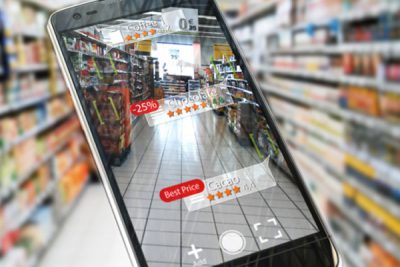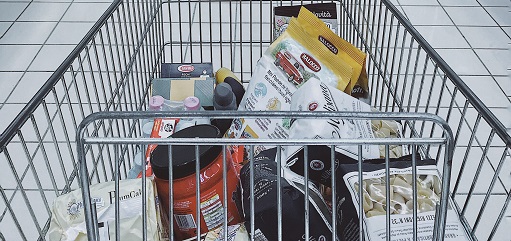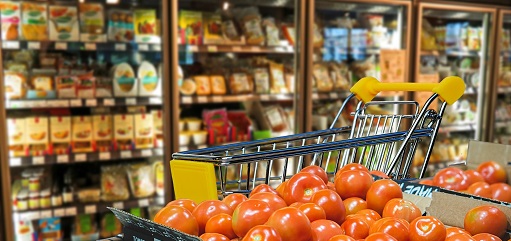SA RETAILERS:
PREP YOUR STORES FOR INTELLIGENT BRANDS THAT KNOW THEIR SHOPPERS AND PRICE THEMSELVES ACCORDINGLY!

SA RETAILERS:
PREP YOUR STORES FOR INTELLIGENT BRANDS THAT KNOW THEIR SHOPPERS AND PRICE THEMSELVES ACCORDINGLY!

 by Mark Morris
by Mark Morris
Characterized by a strong inclination to question the status quo, Mark’s passion is reinvention, taking advantage of the latest advancements in technology.
A qualified marketer and Executive MBA graduate, Mark has worked at C-level with large blue-chip enterprises for more than 30 years, in marketing and sales, retail and information systems.
Being the innovator of Mobile CRM systems used by companies such as Heineken, Cadbury, Mondelez, Vector Logistics and SAB Miller for over 10 years, Mark has a world of experience relevant to modern mobile & CRM projects.
As a founder of two successful Business Technology Incubators, Mark’s experience has broadened to include new developments in technologies including IoT, RFID, Big Data, AI and visualising Business Intelligence.
 by Chris Mills
by Chris Mills
An obsession with math drove Chris’s personal study journey to the highest levels at the University of Cape Town before dabbling in physics whilst writing university-level math text books as a business. Starting PaperQ, a text-book and questionnaire approach to help students prepare for math exams and ultimately launching PaperVideo, a successful VBT business helping math students pass their exams. Which is still run today. Whilst working with Mark Morris at two of his retail Tech Startups, they developed approaches and algorithms that evolved into code and formed the heart of ShopperLogIQ as it is today.
 Are you still pricing based only on experience and intuition? If you’ve been doing so for a while, you’re probably very good at it by now. But even if you are, it can still be a case of hit and miss because there are too many variables to consider. What if you could leverage all the data you have on all your customers all the time, to do this more accurately?
Are you still pricing based only on experience and intuition? If you’ve been doing so for a while, you’re probably very good at it by now. But even if you are, it can still be a case of hit and miss because there are too many variables to consider. What if you could leverage all the data you have on all your customers all the time, to do this more accurately?
Do you use even older and more established approaches like “cost-plus pricing?” Do these pricing guides understand the fluid demand of your store, your geographic region or recognise the ever-changing demographic profiles and purchasing behaviours of your individual shoppers? Of course, they don’t, or couldn’t… until now.
Let’s offer your clients value and not discounts
Pricing as a constant is rapidly becoming extinct. Your prices might LOOK constant but consider if you’re a vet and you recognise a regular customer, you might provide a personal value add and throw in an extra treat for their Maltese. If a dog is pregnant, you might introduce them to a bigger doggie bed and a deal on puppy food. That’s what builds loyalty. A kind of loyalty that secures their business for years to come.
The days of knowing your customers personally have been lost to big stores and high volume FMCG. So, loyalty, like profit margins may be low or like the pregnant dog at the vet, leashed.
We’re not vets you may be thinking, but believe it or not, the same principles hold true for groceries and in the modern world of AI, even a tub of margarine could be seen as having the virtual power to predict who its buyers are going to be at any given price-point.
Pricing is like underwear – one-size-fits-all doesn’t work, no matter how stretchy the fabric
 We’ve long held a fascination with pricing strategies working in the retail industry for over 30 years. Some of which was driving the growth of global spirit brands in SA then conceptualising, starting, running and selling retail execution systems also used by leading international brands in South Africa.
We’ve long held a fascination with pricing strategies working in the retail industry for over 30 years. Some of which was driving the growth of global spirit brands in SA then conceptualising, starting, running and selling retail execution systems also used by leading international brands in South Africa.
All before co-developing an AI-enabled Retail-Shopper-Marketing platform that uses retail pricing algorithms as one of the key components.
Watching the slow pace of industry evolution over the years, we can safely say that while shelf prices still don’t change from shopper to shopper… rewards for purchase can… and rewards inherently change prices. You will turn customers into loyal-friends NOT by discounting, but rather by thanking them for their loyalty with real-time rewards on individual products, which creates dynamic and intuitive shopper-product-price relationships.
Pricing needs a software update – just like everything else
 Pricing can be a major distraction if you constantly have to adjust it based on experience and speculation. Markets are unpredictable and will eventually sink anything that doesn’t adapt. Also, the days of generic ‘one-size-fits-all’ pricing and rewards for customers en-masse have come and gone. This is the era of the individual, and if we don’t market to the individual, we may risk losing sales to the multitudes. As they say, we are people, not ‘sheeple’.
Pricing can be a major distraction if you constantly have to adjust it based on experience and speculation. Markets are unpredictable and will eventually sink anything that doesn’t adapt. Also, the days of generic ‘one-size-fits-all’ pricing and rewards for customers en-masse have come and gone. This is the era of the individual, and if we don’t market to the individual, we may risk losing sales to the multitudes. As they say, we are people, not ‘sheeple’.
Pricing that doesn’t take dynamic product and behavioural economics into account is as effective as going to bat blindfolded.
Optimal pricing for real value requires a system that uses big data sets to crunch numbers, understand interconnected relationships, predict behaviour AND cater to customers’ individual requirements. Can pricing evolve to harness this kind of artificial intelligence? It already has.
A system that knows and drives your shoppers
 Determining price based on behaviour and economics is an art and a science, both must be utilised in the same way an artist would rely on his tools and brushes without ignoring the basic physics that are at work. Now there are high-tech tools that can help you do that.
Determining price based on behaviour and economics is an art and a science, both must be utilised in the same way an artist would rely on his tools and brushes without ignoring the basic physics that are at work. Now there are high-tech tools that can help you do that.
We’ll never forget: Once, in the middle of a presentation we were giving about retail value propositions, a retailer leapt from his desk to adjust his prices based on something we had just said.
It was like seeing a lightbulb turn on. At that moment, what we were showing made so much sense to him he couldn’t wait another minute to make those adjustments. The customer behaviour we brought to his attention made him feel confident enough to immediately execute a dramatic change. There and then.
Discounting – The zero-sum game
 When major retailers try to compete with cheaper prices, it’s a race to the bottom. It eats into growth and profit and even if you do win sales from your competitors, it’s often still a Win/Lose situation. A discounting strategy does the opposite of encouraging loyalty. The only thing another retailer needs to do to win over a shopper’s loyalty is undercut you with a deeper discount.
When major retailers try to compete with cheaper prices, it’s a race to the bottom. It eats into growth and profit and even if you do win sales from your competitors, it’s often still a Win/Lose situation. A discounting strategy does the opposite of encouraging loyalty. The only thing another retailer needs to do to win over a shopper’s loyalty is undercut you with a deeper discount.
It’s not about lowering your prices. In fact, it’s not about changing the prices at all. It’s about finding and leveraging the quantum of rewards that will encourage your customers to become better customers. Customising value deals that will appeal to them as individuals.
In the ‘old days,’ retailers could know all of their customers intimately. The store owner would know what the customer usually bought, who their family was and what was of value to that customer. This allowed the retailer to provide rewards and throw in the odd ‘freebie’ as a token of appreciation. A freebie that the customer would value like some sugar or a loaf of bread.
Now, retailers have become so large and the scale of customers so wide and varied that this personal touch was lost. But thanks to artificial intelligence, it’s back and enjoying a lucrative revival. Win/Win is back again.
AI machine learning is kicking old-school loyalty programmes to the curb
Ironically, it has taken an artificial intelligence machine to help us go back to treating our customers like real human beings again. Personalised gratification is what keeps them coming back.
 Experts have been warning us for ages that most large retail reward programmes are dysfunctional. They focus on discounting and reward customers with cheaper prices, resulting in that dog leash on the profit margin again, with no loyalty to bank as a result. Now people shop for ‘this’ here and for ‘that’ there hunting for the cheapest deal wherever they can find it – scattering their spend. A retail ‘race to the bottom’…
Experts have been warning us for ages that most large retail reward programmes are dysfunctional. They focus on discounting and reward customers with cheaper prices, resulting in that dog leash on the profit margin again, with no loyalty to bank as a result. Now people shop for ‘this’ here and for ‘that’ there hunting for the cheapest deal wherever they can find it – scattering their spend. A retail ‘race to the bottom’…
A more effective strategy would be rewarding customers with real value whenever they help drive the profit margin. Thank them for helping you increase sales by giving them something they really want or need. The AI machine can understand their behavioural metrics to do that for you.
For example, a customer, Sandy from Sandton buys a lot of pool chemicals and school stationery and kids uniforms at the beginning of each year. A couple of Unicorn inflatable toys for the pool as a surprise bonus would create a household of happy kids for Sandy. “How thoughtful!”, says Sandy. And, as we all know, happy kids make a happy household. That’s recognition and thanks that ensure Sandy’s next spend.
This type of rewarding based on behaviour (unlike discounting) is an “infinite game” because everyone wins. The system optimises the benefit of regular purchasing actions taken by the customer and finds a way to make the best deal possible for the supplier, the retailer and the customer.
So, benefit cascades down to the customer rather than discounting profit loss cascading down in such a way that only the customer benefits. That’s a positive-sum game as opposed to the zero-sum game.
Meet products that price themselves… the labelled price is explicit, the thank-you is implicit. And, loyal and recognised customers get treated… differently. And the way it’s done is brilliant.


